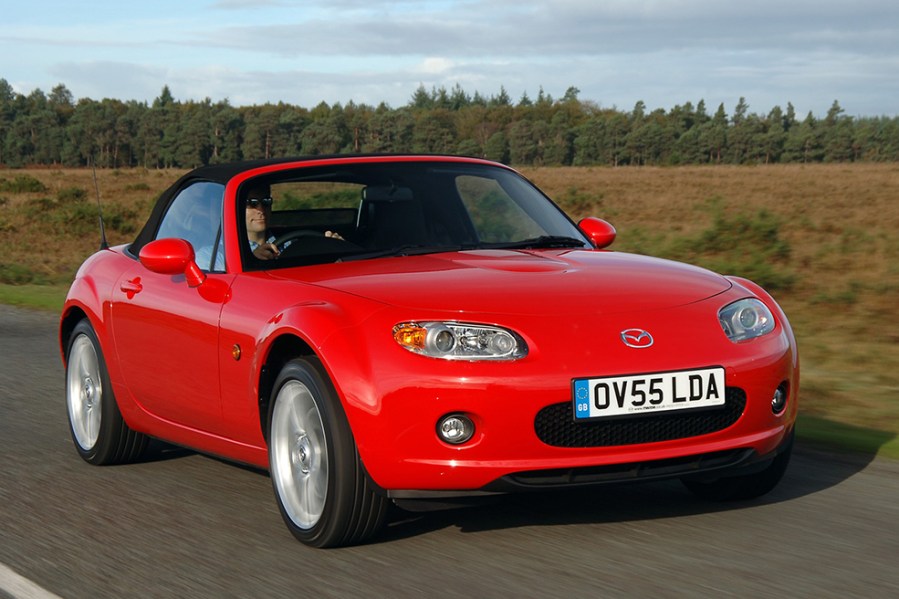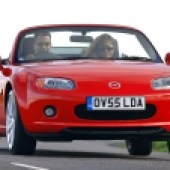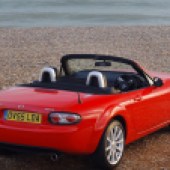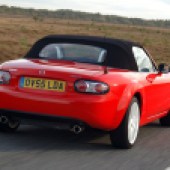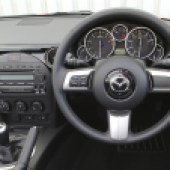The Mazda MX-5 NC (Mk3) brought hitherto unknown sophistication to the seminal modern-classic roadster. Here’s how to buy a great one
Words: Joe Miller
The ‘NB’ second-generation Mazda MX-5 was evolutionary rather than revolutionary, updating the interior and modestly enhancing both the driving experience and practicality, yet showing its age by the mid-2000s. Introduced in 2005, the NC generation was a completely new model; safety was improved with multiple airbags and driver aids such as traction and stability control, which could manage power in the event of lost grip, helping prevent inexperienced drivers from crashing what might well have been their first rear-wheel-drive car.
Although it appeared larger than the MX-5 NB due to bigger wheels, rounded lights and flared arches, the NC remained a lightweight, compact sports car, weighing just 45kg more than its predecessor and measuring only two inches longer and 1.6 inches wider. The slightly increased dimensions benefitted the interior, which gained extra space and equipment: options included satellite navigation, a semi-automatic paddle-shift gearbox, and an electronically folding metal roof which, despite its perceived weight, adds only 36kg.
The NC brought greater luxury and comfort to the MX-5 formula, and while some might argue this detracts from the car’s purity, it does increase everyday usability while retaining the fun driving experience that made the first two generations so popular. Once criticised, the MX-5 NC is now emerging as the go-to choice for budget-conscious enthusiasts, with early examples available for similar sums to the more basic NB – and far less than the original NA.
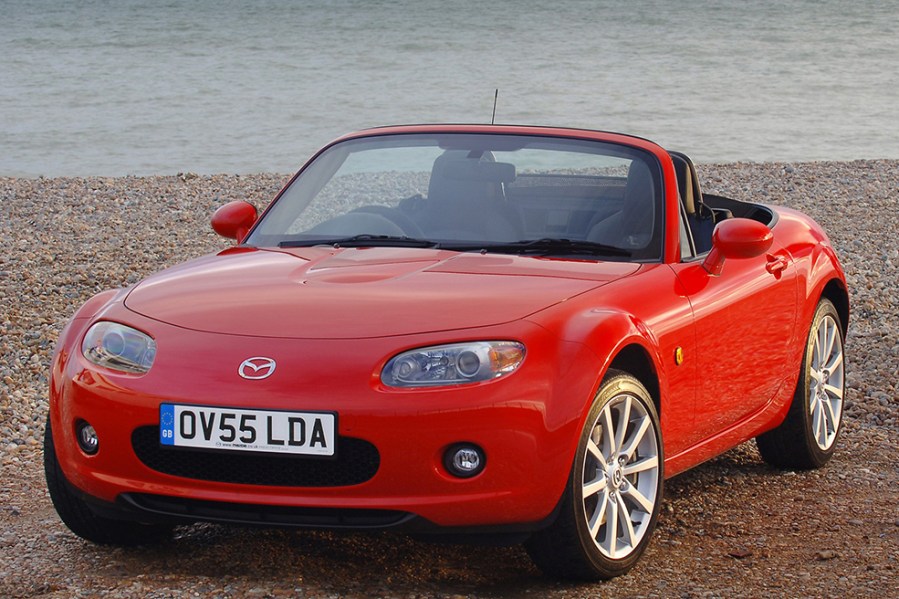
Mazda MX-5 NC values
The Mk3 MX-5 represents fantastic value right now, with tatty but useable early cars starting from under £1500. These may be hiding some rust and lengthy MoT failure sheets in the near future, however, so we’d advise starting your search around £2000-£4000 for a pre-facelift car, with the power-folding hardtop adding around £500 to the price over a soft-top car. Later facelifted cars rise to around £5500-£7500 depending on mileage and condition, but collectible limited editions such as the 25th Anniversary are starting to command £12,000-plus in particularly exemplary condition.
Insurance Costs
2006 Mazda MX5 2.0 Roadster, £4000 value.
Example quote: £275 or £293 with Agreed Value.
Quotation supplied by Lancaster Insurance. Tel: 01480 400761
Quote based on a 45-year-old marketing manager, access to another car, no claims or convictions, club member, 3000 miles per year, no modifications, living in SP2 0HL. Disclaimer: Subject to underwriting criteria. An additional charge may be payable. Authorised and regulated by the Financial Conduct Authority.
Bodywork
Arguably the most attractive aspect of owning a third-generation MX-5 is its relative resistance to rust. Unlike earlier models, the NC is far less prone to chassis leg, arch or sill corrosion than Mk1s and Mk2s. That said, older or higher-mileage Mk3s are beginning to show signs of wear that may require welding, so always check the MoT history for any corrosion advisories, particularly around the sills and subframe mounts. The low bonnet makes stone chips common, which can lead to rust; any light corrosion inside the bonnet or bootlid is usually caused by the rubber seals wearing through the soft paint over time. This is easily remedied by sanding back the affected area, repainting it, and protecting it with tape under the seal to prevent further wear.
Soft-top drains should be kept clear to avoid water ingress or creeping rust, so inspect the parcel shelf and under the seats for damp as an indication of blocked drains. Many electrical components are located in the seats and beneath the carpets, so a car with water ingress could develop serious electrical issues if not addressed early. The plastic panel beneath the wipers should also be firmly secured, as it can allow water to leak into the footwells. The foam gaskets that prevent water entering through the scuttle panel screw holes tend to perish over time, inviting leaks; genuine Mazda replacements are inexpensive, but the traditional fix is a generous application of quality silicone sealant around the screw holes.
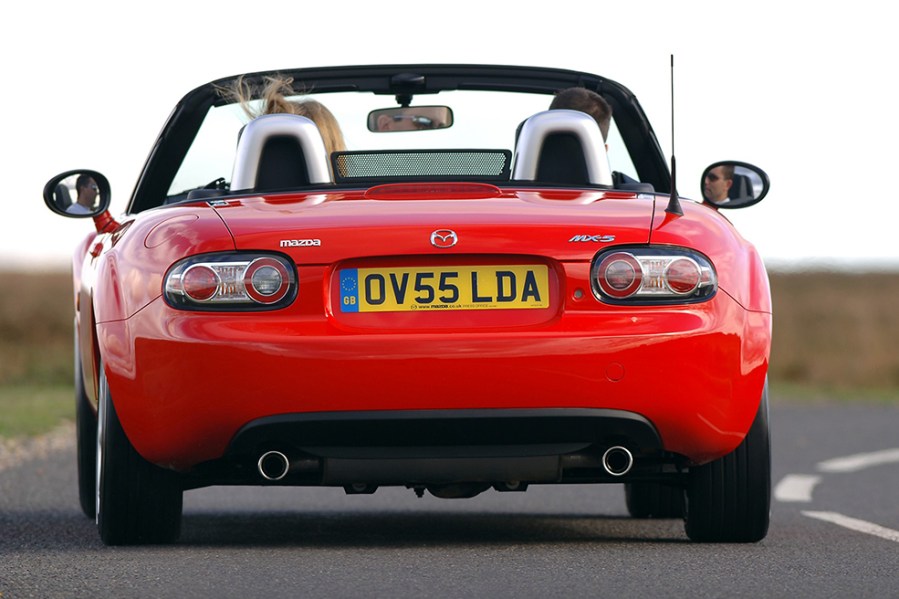
Engine and transmission
The Mk3 MX-5 came with two engine options: the 1.8-litre MZR L8-VE, paired with a five-speed gearbox and producing 126bhp, or the 2.0-litre MZR LF-VE. The latter was the largest factory-fitted engine in an MX-5, delivering 158bhp through a six-speed transmission. Both are generally robust, being relatively modern Japanese units, but listen carefully for a rumbling at idle, especially on 1.8-litre examples. This can indicate chronically low oil levels, which not only points to an imminent engine rebuild but also suggests other maintenance may have been neglected. If the owner hasn’t been topping up the oil correctly, what else might they have overlooked?
Oil should be changed no later than every 8000 miles, or 6000 miles if the car is used regularly. On the topic of oil, blue smoke under acceleration can signify worn piston rings, again indicating the potential need for an engine rebuild. These cars are common enough that, unless the example is otherwise perfect and priced well below market value, major engine work is rarely worthwhile. If serious issues are present, it’s best to walk away.
Misfires when idling or accelerating are a frequent issue on NC MX-5s, as early cars were fitted with thin, delicate wiring to the coils, which can fray over time or suffer damage during routine underbonnet work. This can be repaired by a competent home mechanic or auto-electrician, but it’s wise to follow the fix with new coils and spark plugs. Ensure the asking price reflects any work needed.
Switching to timing chains in the Mk3 made the engines even more durable, but early cars are known to have weak timing chain tensioners. A well-maintained car that has covered around 70,000 miles has likely had the tensioner replaced or upgraded, but if there’s no proof, make enquiries. Both engines require a major service at 62,500 miles, which should ideally be carried out by a Mazda dealer – again, ask for evidence.
The factory-supplied FL22 coolant should last up to 120,000 miles or ten years, but we recommend changing it on purchase for peace of mind, unless you’re buying a very late car. The coolant reservoir is prone to cracking, so inspect the neck for any residue. ‘Fogging’ up over time can also make it hard to see the coolant level, but replacements are common, and for a tidier engine bay, MX5parts sells an aluminium expansion tank.
Like its predecessors, the NC MX-5 offers a precise, tactile gearchange, regardless of transmission. Both gearboxes, particularly the five-speed, can feel stiff when cold, but this generally eases after a few miles. For long-term improvement, Red Line MT gearbox oil is popular among owners. Any rattles or vibrations through the shifter may suggest harsh use when cold, potentially damaging a gear or synchromesh. Second-hand gearboxes cost under £200, and being rear-wheel drive, replacement is straightforward for a competent home mechanic. If the differential whines or rumbles, particularly at low speeds, it’s likely low on oil. We recommend flushing and replacing the engine, gearbox, and diff oils upon purchase.
Suspension, steering and brakes
The MX-5’s suspension has always struck a fine balance between sportiness and compliance, and the NC is no exception. To retain those qualities, however, the suspension itself needs to be in good order. On Mk3s, anti-roll bar drop-links usually wear out around 40,000 miles, a little more on cars that see mostly motorway use. Dampers typically last 30,000 miles and, when past their prime, can leave the car feeling soft and slightly wallowy.
The factory offered optional Eibach lowering springs, finished in blue, which reduce ride height by 30mm. They’re fairly uncommon, but if you want to lower the car and sharpen its handling, numerous aftermarket suppliers offer sportier springs and dampers tailored to NC MX-5s.
The larger wheels on the Mk3 bring wider tyres, making the car more sensitive to alignment. It should feel keen but not twitchy, and it shouldn’t tramline. Alignment is easily knocked out, so keep an eye out for unusual tyre wear. Tyres can significantly change the driving experience – enthusiasts often favour Nankang’s semi-slick NS2-R or AR-1, though these aren’t recommended for road use or wet conditions, for which the Kumho KH31 comes highly recommended.
All MX-5s have a reputation for seizing brake callipers. During a test drive, try a few firm stops and check that the car brakes in a straight line. Examine the discs for scoring and ensure pad wear is even on both sides. A replacement calliper costs around £30, and once fitted, it’s wise to move the car regularly and, if possible, avoid leaving it parked with the handbrake on.
Interior, trim and electrics
Electrics are frequently a problem area on cars from this era; the optional power-folding roof is a complex, expensive item and should function flawlessly. Operation ought to be smooth, quiet, and take no more than 12 seconds to open or close. Any unusual noises or noticeably slow movement should be treated with caution.
Earlier models used plastic gears, which are fragile and tricky to replace. Most will now have had higher-quality replacements fitted, but inspect the mechanism as thoroughly as possible, particularly on higher-mileage examples.
Dashboard warning lights can appear due to a low battery or after a jump-start, but the DSC warning, for instance, can be cancelled by turning the steering lock fully unless there is another underlying issue. With warning lights now causing an MoT failure, it is sensible to be reasonably confident that you can address any persistent alerts – an OBD2 code-reader may help with diagnosis.
Electric window switches are prone to failure and are fiddly to replace, so ensure they work perfectly and that the driver’s one-touch function operates correctly. Seatbelt reels loosen with age, the driver’s usually being first – pull sharply on the belts a few times and check them during emergency stops to ensure they lock and release correctly. Finally, confirm you receive both keys with the car and that each will lock, unlock and start it, as replacement keys cost £150-£200 and must be coded by Mazda.
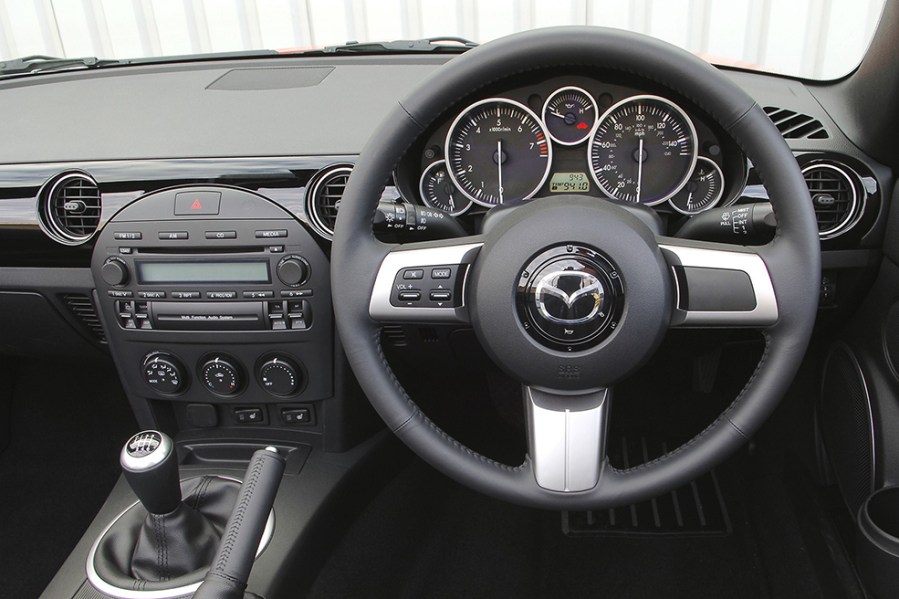
Mazda MX-5 NC (Mk3): our verdict
Five years ago, the NC MX-5 would have seemed out of place in the classic car world – too modern, too complicated, and too pricey for most enthusiasts. Today, though, it has considerable appeal, offering the back-to-basics, enjoyable driving experience we love from the first two generations of MX-5, while adding enough comfort and refinement that long journeys don’t feel daunting. Unless you need four seats, it could even serve as a daily driver. What’s more, prices now start at under £2,000, which represents exceptional value.
The 2.0-litre models benefit from stronger performance, a six-speed gearbox for better fuel economy and motorway cruising, and a limited-slip differential. We wouldn’t put anyone off a 1.8, however, and if you relish extracting every ounce of performance, you might prefer it. Most limited editions only add cosmetic touches such as wheels and paint, so they rarely justify the extra cost.
MODEL TIMELINE
2005
Mk3 Mazda MX-5 (codenamed NC) unveiled at New York Auto Show. Offered with 1.8- and 2.0-litre engines, uses RX-8’s double-wishbone suspension.
2006
Power-operated folding hardtop (PRHT) introduced; polycarbonate plastic rather than metal, adding just 36kg to total weight.
2008
NC2 facelift launched at Paris Motor Show with restyled bumpers and sideskirts, new wheels, new gauge cluster and revised door cards for improved legroom.
2009
MX-5 Superlight Concept unveiled at Frankfurth Motor Show, weighing 1000kg and sporting no roof or windscreen.
2010
Various Limited Edition models introduced, including 20th Anniversary, Miyako and Black Edition, each with bespoke trim and details.
2012
NC3 facelift brings new bumpers, retuned ECU, new wheels and various new colours.
2014
25th Anniversary MX-5 launched with Soul Red paintwork, Bilstein dampers, leather seats and all options ticked. 1099 produced, quickly becomes a collector’s item.
2015
ND fourth-generation MX-5 takes over after ten years of NC sales.

